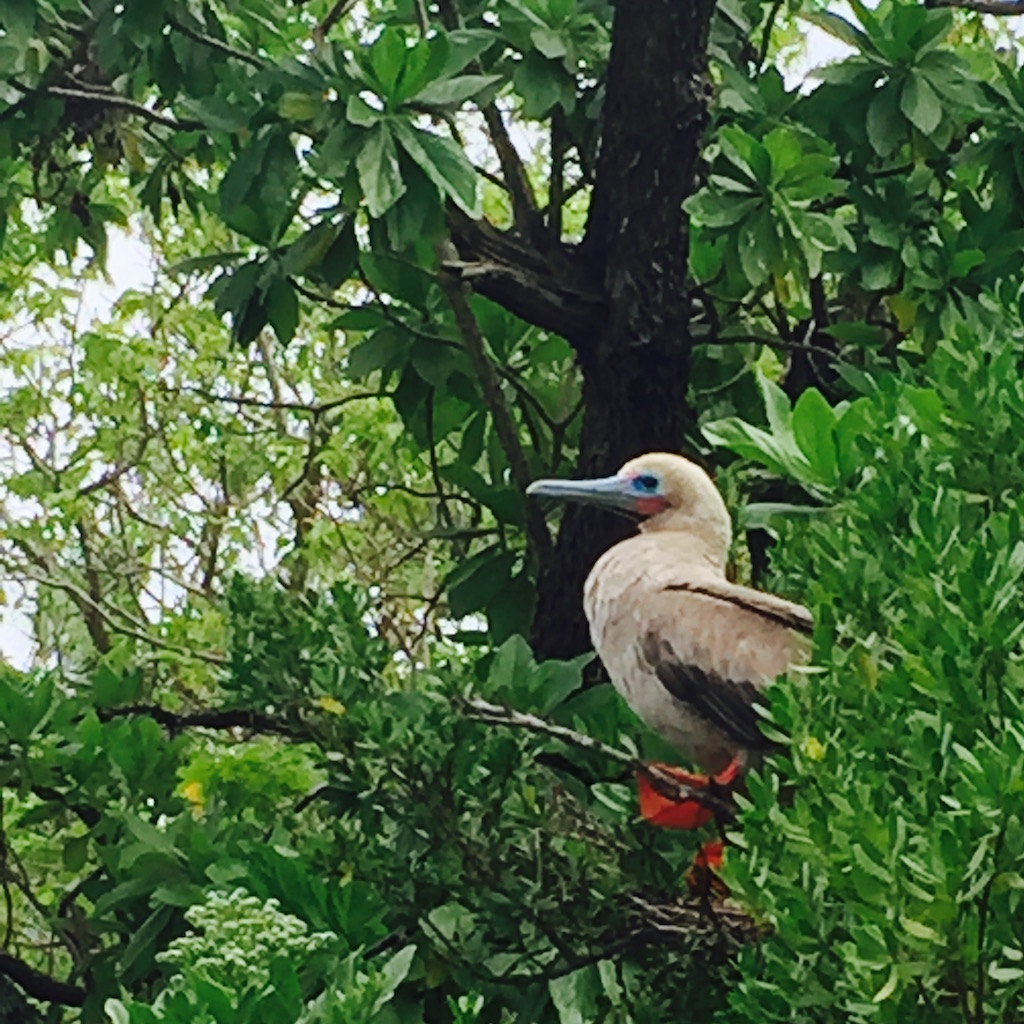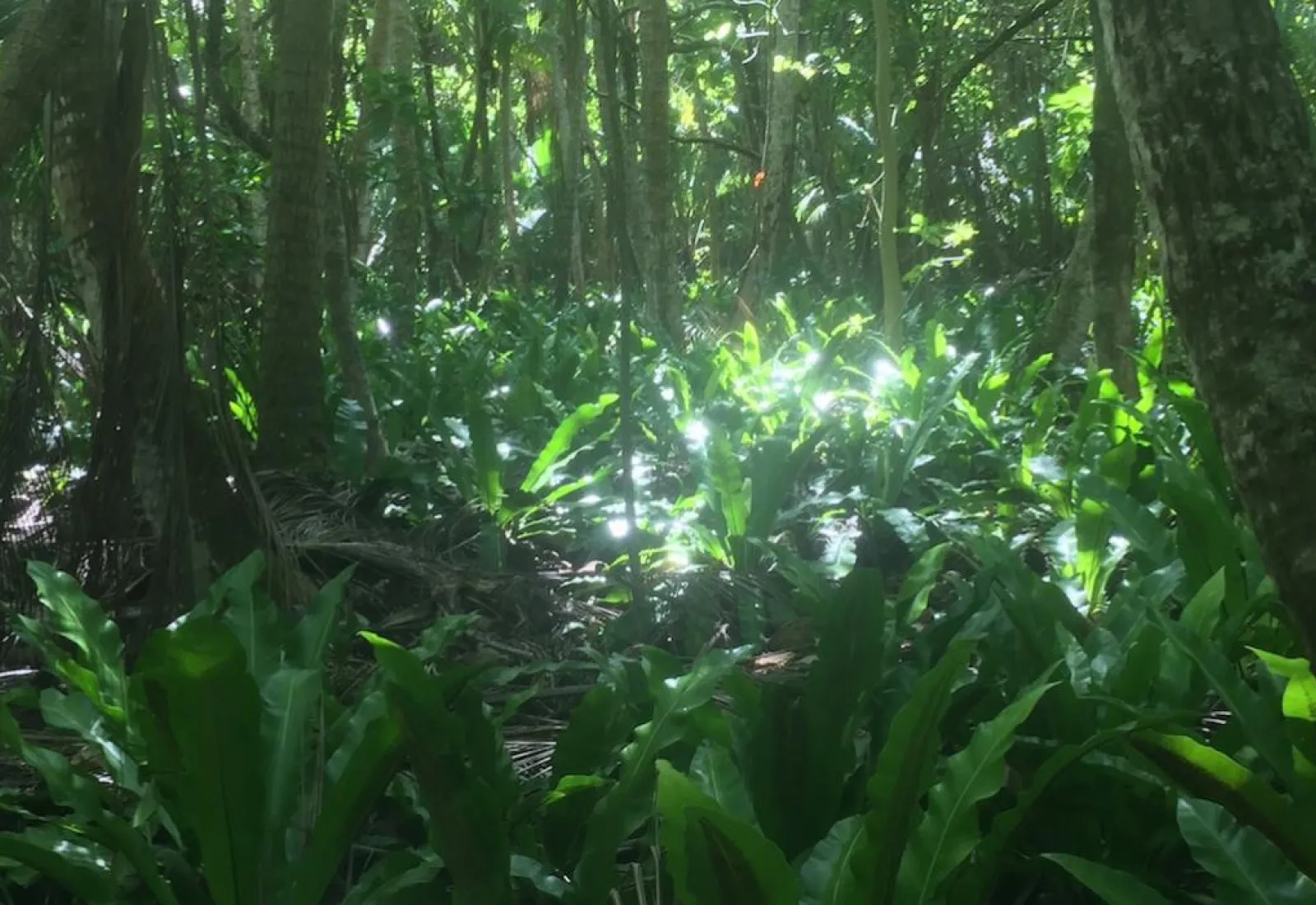
Découvrez l'écosystème forestier de Tetiaroa avec sa population diverse population en plantes, oiseaux, invertébrés ... et autres. Les étudiants marcheront dans la forêt, collecteront des specimens, apprendront l' abondance et la richesse de celle-ci et peuvent faire une carte de leur marche en utilisant les coordonnées gps.
Map my walk
Students find organisms and record data on each find using gps, photos, drawings, and measurements.
Materials: Each student (or pair of students) needs a smart phone with a gps-locator app and camera, a small notebook & pencil, a data-recording sheet, a tape measure, and a small piece of whiteboard with a marker.
Procedure: Students are led on a discovery hike by a guide, who can point out some of the different species in the forest. After about 1/2 hour, students can choose which organism they would like to map, and find one as a starting point.
For instance, if the student decides to map the pandanus trees, he or she should find one as the starting point of their count. The specimen is numbered by writing #1 on the whiteboard and taking a photograph of the specimen with the number. Then the data sheet is filled in with gps coordinates, habitat, measurements (for plants and invertebrates), time, notes and information, such as location details (sunny, shady, etc.).
The walk and data collection continues.
Follow-up: Afterwards, the coordinates can be found on a large-scale (projection? paper map?) of a google map of the motu. If photos can be printed in a small format, students can tape them to the sides of the map and connect each photo to the location on the map with pins. This could also be saved as a follow-up activity at school.
Questions: Ask students to look for patterns in their data. Does this plant prefer sun or shade? Were the hermit crabs alone or in groups? After making inferences from their own data, students can do research on the organism they mapped to see what else they can learn.
Biodiversité de l'écosystème mixte d'une forêt
Dans la forêt, les étudiants vont mesurer un transect, mettre des piquets dans les coins et attacher des cordes ou rubans pour marquer les limites. Dans le transect, le nombre d'espèces et la quantité de chaque espèce est notée.
Autre possibilité: les étudiants peuvent construire et utiliser les -cubic-foot cubes pour compter à petite échelle.
| Nom d'espece ____________________________ Mon prénom _____________________________ | |||||
|---|---|---|---|---|---|
| specimen nº | habitat | coordinées gps | taille | en groupe / combien | notes et autres informations sur le specimen |
| 1 | |||||
| 2 | |||||
| 3 | |||||
| 4 | |||||
| 5 | |||||
| 6 | |||||
| 7 | |||||
| 8 | |||||
| 9 | |||||
| Données collectées sur le motu __________________ le _____________2018 | |||||
Further information on some of the inhabitants of the mixed forest community:
It is a heterogeneous mixture of many species, including:
Neisosperma - Does not commonly occur; one of richest zones; home for land snails, possibly including endemics; forage grounds for birds and skinks.
Scaevola-Guettarda - Holds beach together; halophytic properties of major species helps protect inland species.
Pisonia grandis - Favorite roost of gregarious seabirds; birds and leaves produce rich humus; one of the most characteristic and originally widespread coral island forests.
Tournefortia argentea - One of the most successful colonists; habitat for nesting seabirds; stabilizes soil so small islands can enlarge and other species can become established.
Pisonia-Tournefortia - Dense canopy forest; old, natural; roosts and nesting sites for many birds, (white terns, noddies); some of the richest soil on atolls
Suriana Binds windblown sand along windward beaches
Neisosperma oppositifolia - Climax forest; may invade and replace mixed broadleaf forests and Pisonia forests
Pandanus - Source of food and nesting sites for reef heron, brown noddy Source of food and building materials
Scaevola servicea - Early colonizer; stabilizes beach areas; habitat for nesting seabirds (black-footed albatross, red-footed booby, frigatebirds); nesting area and food for green turtle; home to endemic bug Camphlomma; hiding spot for young black-naped terns before they can fly.
Sida fallax scrub forest - Low in stature, pure stands, but sometimes with other low herbaceous plants, nesting site for sea birds
Pemphis acidula scrub - Location: intertidal rocky areas. One of the most extreme halophytes, survives submergence by seawater; inhabits limestone with no soil at all; survives typhoons; no insects in ecosystem; extremely hard wood; large specimens, 5 feet in circumference or more; very old (hundred of years), possible use in arbochronology; no undergrowth, not succeeded by any other species; habitat of long-tailed cuckoo.

